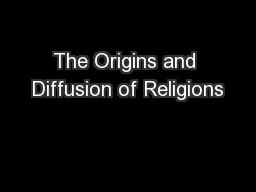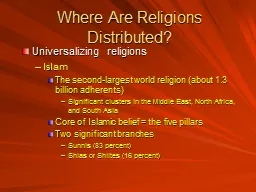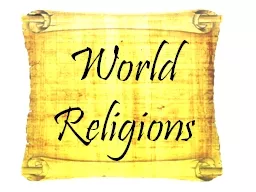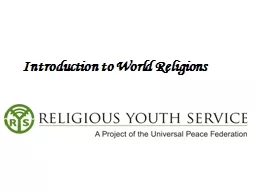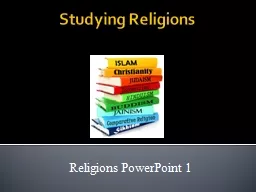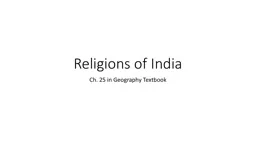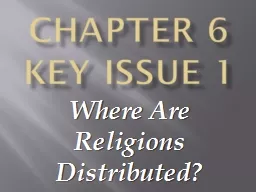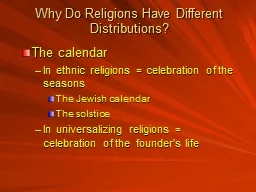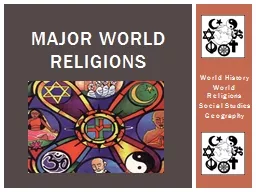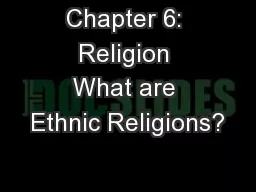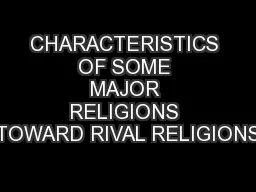PPT-The Origins and Diffusion of Religions
Author : liane-varnes | Published Date : 2016-12-10
They Who Goeth A round Getteth around Origin of Religions Universalizing Religions Ethnic Religions Universalizing religions have precise places of origin and
Presentation Embed Code
Download Presentation
Download Presentation The PPT/PDF document "The Origins and Diffusion of Religions" is the property of its rightful owner. Permission is granted to download and print the materials on this website for personal, non-commercial use only, and to display it on your personal computer provided you do not modify the materials and that you retain all copyright notices contained in the materials. By downloading content from our website, you accept the terms of this agreement.
The Origins and Diffusion of Religions: Transcript
Download Rules Of Document
"The Origins and Diffusion of Religions"The content belongs to its owner. You may download and print it for personal use, without modification, and keep all copyright notices. By downloading, you agree to these terms.
Related Documents

